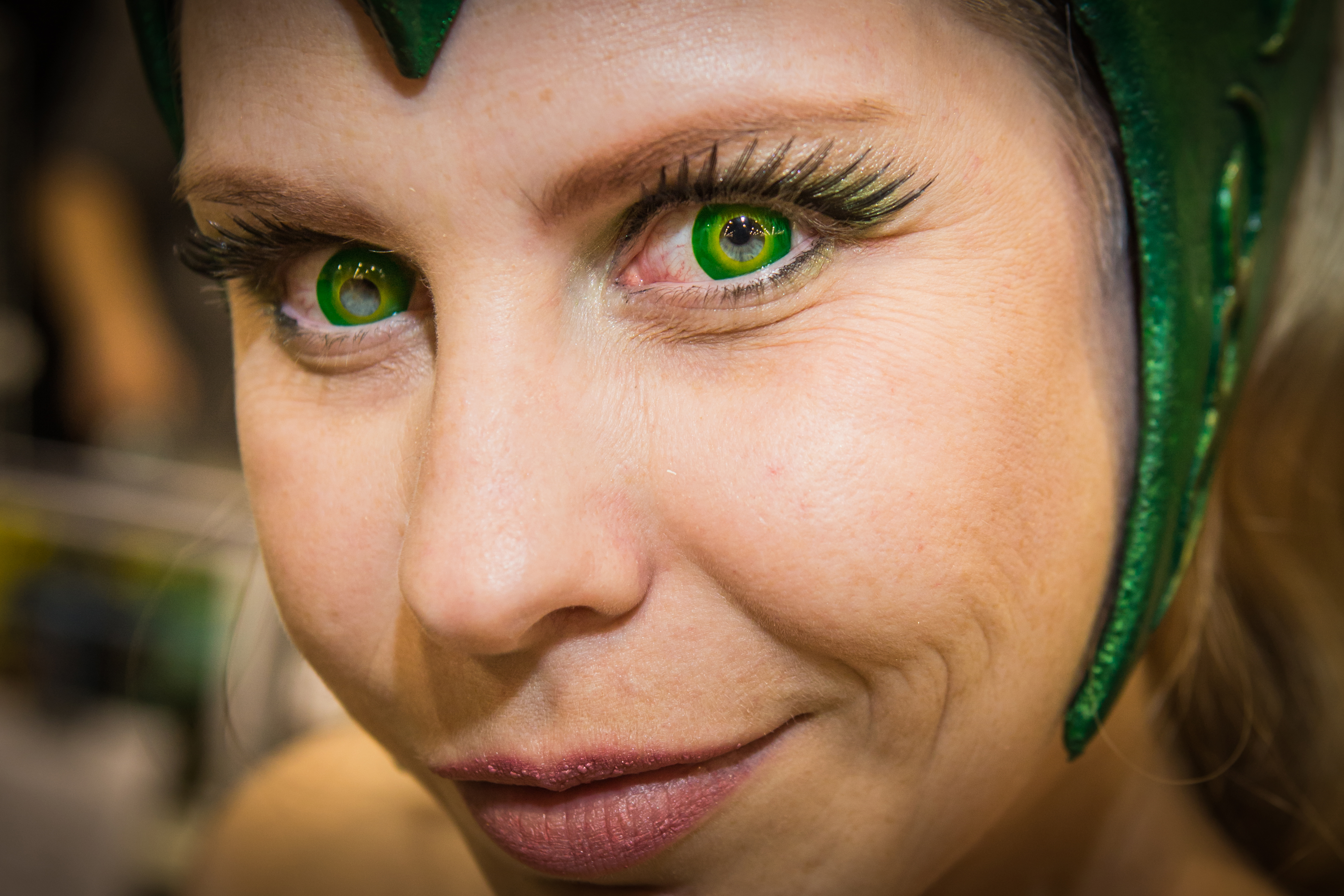WASHINGTON — Rolling your eyes can be like rolling the dice.
“I have seen decorative eyes before. I’ve actually seen ones that look like dice in the eyes. Actual rolling dice,” said Chris Wanamaker, president of the D.C. Anime Club in Washington.
When you purchase decorative contact lenses, you could be rolling the dice on your health too.
Decorative contact lenses, also known as fashion lenses, are becoming more popular, likely due to the rise of science fiction and cosplay – which is costume play – culture.
Cosplay is similar to performance art, Wanamaker said. It’s a chance for fans to dress up as their favorite Anime, comic book, vampire or video game character. Last year’s Anime Expo in Los Angeles drew nearly 161,000, according to the event website.
“Those of us who were seen as the weirdos – the people who are geeks and weirdos – were just like looked down upon,” Wanamaker said. “Now all of a sudden geek is now chic. Now everyone wants to be a geek.”
Decorative lenses can take those cosplay costumes to the next level, completing a cosplay look – but without necessarily correcting vision.
The American Optometric Association reported 17 percent of Americans have tried wearing contact lenses for cosmetic purposes in 2013. Of that 17 percent, 24 percent did not consult an eye doctor or get a prescription before purchasing their decorative lenses.
Now, the Optometric Association, the FDA and the Entertainment Industry Council are teaming up with the FX series American Horror Story to educate people on the risks of these lenses.
“Putting a piece of plastic on your eye can pose a risk,” said Dr. Rachel Bishop, chief of the consult services section at the National Eye Institute, which is part of the National Institutes of Health in Bethesda, Md.
Contact lenses sit on the surface of the eyes, so they can interfere with the way the eye normally functions, she said.
Infections – such as pink eye – or corneal ulcers, which are germs that eat through the cornea, could occur if contacts are not used correctly, said Dr. Ashley Wong, a pediatric optometrist at the Eye Doctors of Washington. This could lead to visual impairment or even blindness, she said.
“If you don’t know how to properly clean or care for your lenses or even put them in and take them out, sometimes people can even scratch their eyes and give themselves corneal abrasions,” she said.
Moreover, contacts are not one size fits all.
“Not all contact lenses are made for everyone,” Wong said, “so by coming in to see your eye care professional, we’re able to make sure the size of the contacts fits your eyes.”
Contacts that don’t fit properly, or are too tight, can lead to an eye infection. They can even deprive eyes of oxygen, causing blood vessels to grow in the eyes, she said.
Bishop said that there is additional risk when decorative contacts aren’t approved by the FDA.
“If you’re buying decorative lenses from an FDA-approved company, then those [decorative lenses] also go through the same regulatory process,” she said. Colored contacts sold through approved retailers can be around $50, but online prices can run as low as $20.
Not all retailers are licensed by the FDA and some may be selling the lenses illegally, often online. People, who wear decorative lenses that don’t go through the same regulatory process as regular lenses, are opening themselves up to infection.
“How do we know what’s in it, is it packaged properly?” she said. “How do we know you’re not putting bacteria in your eye?”
Ronald Jolles, whose son, Abe, was about to purchase his first contact lenses at Dr. Wong’s office in Chevy Chase, Md., said he would not allow 11-year-old Abe to purchase lenses through a retailer not approved by an eye doctor.
“It’s very hard to keep things clean,” Jolles said. “It’s hard even in control conditions in hospitals and doctors’ offices to keep things sanitary to keep things clean.”
He said he doubted that retailers – selling lenses not approved by the FDA — would properly package contacts and maintain the same levels of cleanliness required in doctors’ offices. Not that Ronald Jolles has to worry — Abe Jolles said he has no intention of purchasing them.
“They could literally give a child or a grown up a bad eye infection if they don’t go to see an eye doctor,” Abe Jolles said.
Wong said symptoms of infection include: redness, pain, discharge or blurry vision – all conditions that should send the sufferer to an eye doctor.
“We consider eye health as part of your general health,” Bishop said.” You see different doctors at different time in your life to avoid illness. It’s important that people are getting eye exams, especially if someone is thinking of using contacts without an exam.”


